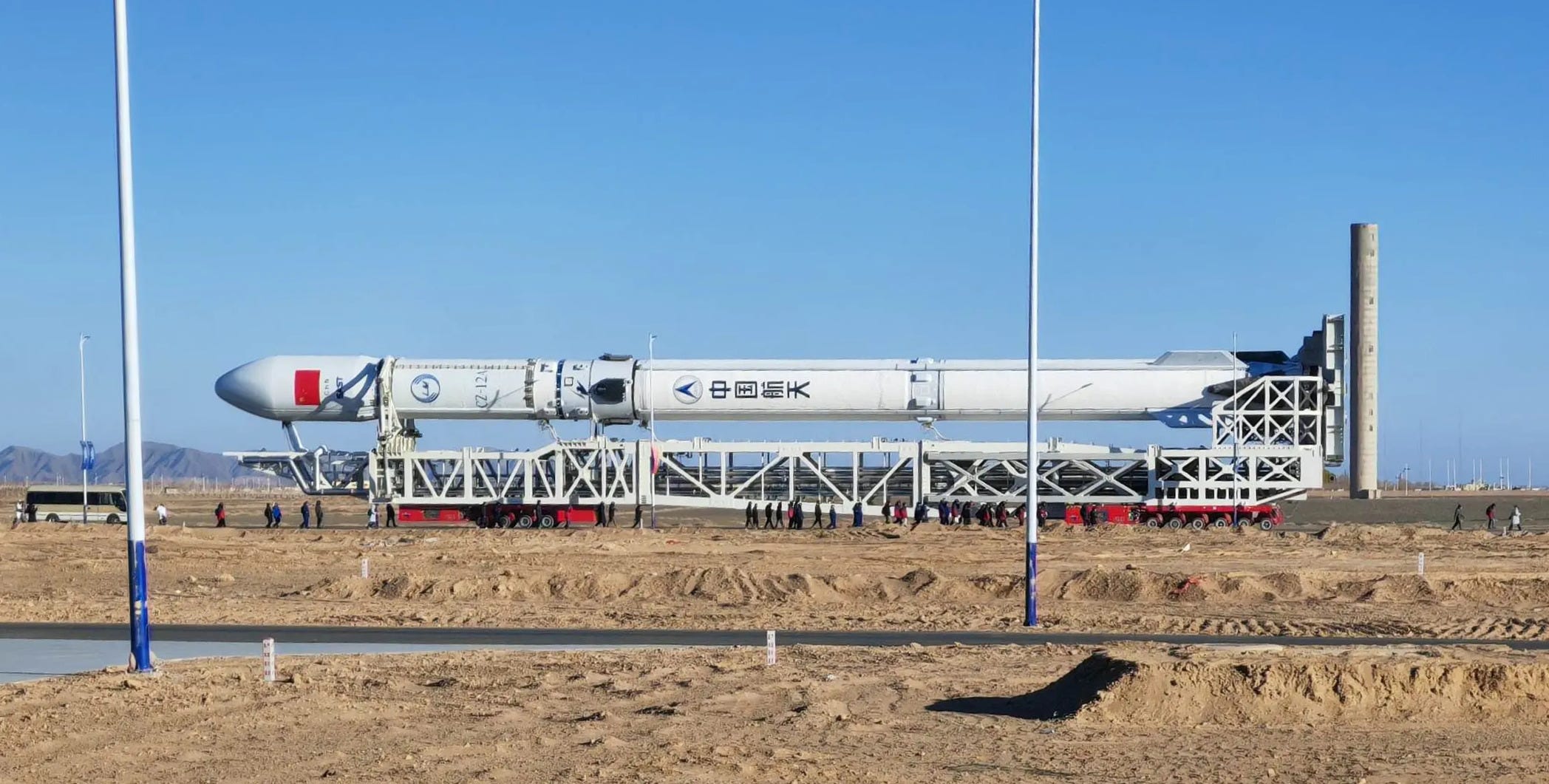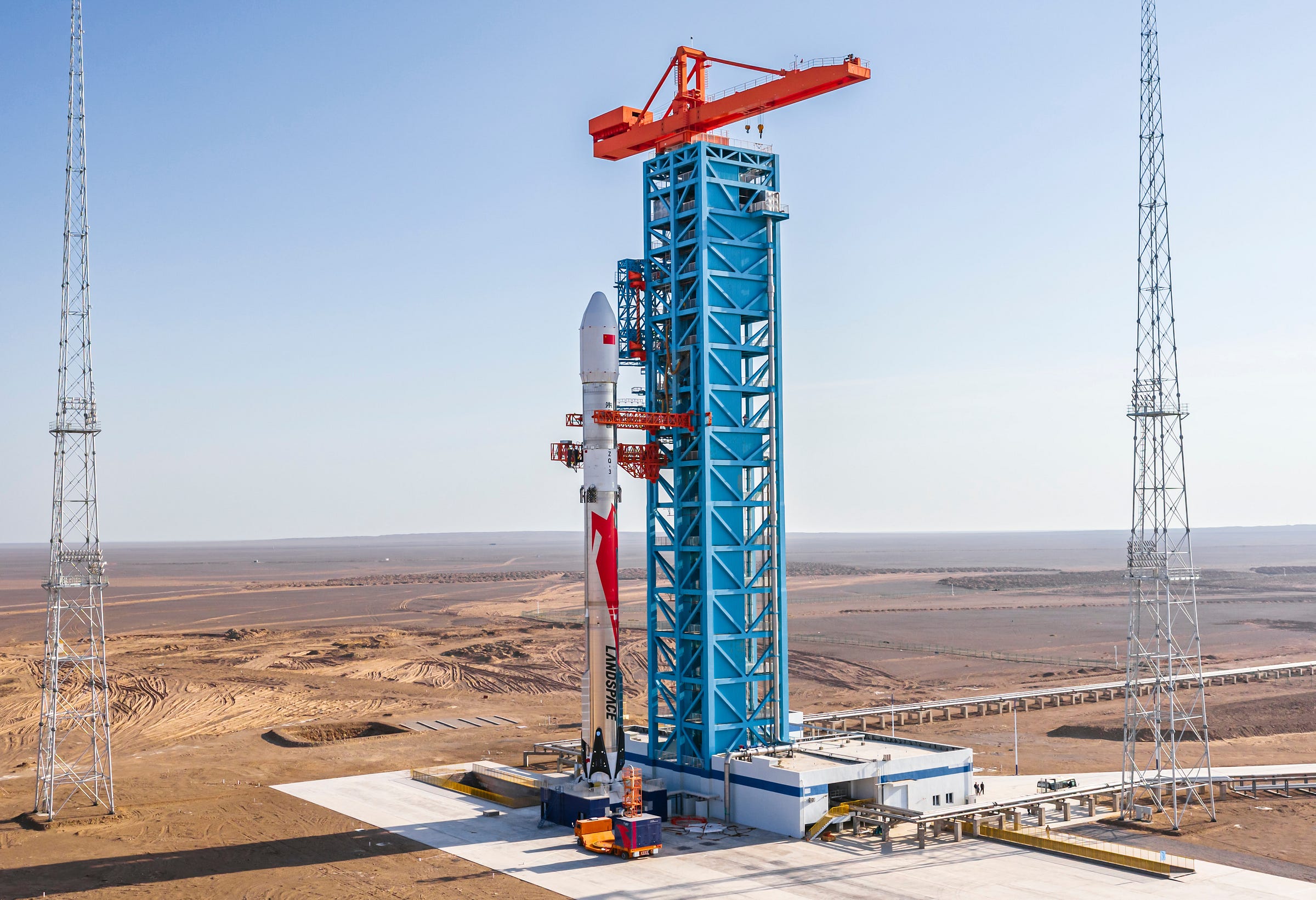China Has Three Reusable Rockets Ready for Their Debut Flights
One of the three launch vehicles will be China’s first and the first outside the United States.
Three of China’s space enterprises are near the debut flights of their partially reusable rockets, expected to liftoff before the end of the year.
Around November 25th, the Shanghai Academy of Spaceflight Technology’s Long March 12A partially reusable launch vehicle1 was spotted heading for its launch pad the the Jiuquan Satellite Launch Center, for its first public appearance of a full vehicle. The liquid methane and liquid oxygen burning rocket has two 3.8-meter wide stages, with the first equipped with seven Longyun engines from Jiuzhou Yunjian (九州云箭) and the second with a single vacuum optimized YF-209, to carry up to 12,000 kilograms. First-stage reuse will be achieved by an engine performing a landing burn to touchdown on four legs, with grid fins guiding it before that.
Details on development for the Long March 12A have been hard to come by as few have been released. In January, a largely successful high-altitude hop test occurred, succumbing to software glitches during splashdown. Around August, a second-stage static fire was completed in Haiyang (海阳市). Lastly in November, the rockets transporter-erector was delivered. What has been trackable is Jiuzhou Yunjian’s efforts on verifying its engines for reusable operation.
Due to the opaque nature of the Long March 12A’s development, it is unknown if the launch vehicle at Jiuquan will wrap up the overall development campaign, possibly with a static fire, before a debut flight later in December.

Meanwhile, LandSpace’s 66-meter-tall, 4.5-meter-wide Zhuque-3 is on its Jiuquan launch pad too, following delivery in October. Like the Long March 12A, the rocket burns liquid methane and liquid oxygen, but has two more engines, LandSpace’s TQ-12A, on its first-stage and one vacuum-optimized TQ-15A engine on the second-stage, to deliver up to 11,800 kilograms in its ‘block one’ configuration. Similar to the Shanghai Academy’s rocket, Zhuque-3’s first-stage will touchdown on four landing legs following an engine burn, with four grid fins guiding it through the atmosphere.
Zhuque-3 has had a highly successful test campaign during its just over two-year-long development process. In September 2024, the launch vehicle’s in-atmosphere hop-testing campaign was completed with a 10-kilometer flight that saw an engine relight for touchdown. That was followed by a 45-second static fire in June, later matched by flight hardware performing a similar static fire with a second-stage on top. Hardware has also been flown with the company’s Zhuque-2 and Zhuque-2E launch vehicles as well.

Along with the two methane-fueled rockets, Space Pioneer’s Tianlong-3 is also at Jiuquan, having arrived sometime in November. The two-stage 72-meter-tall, 3.8-meter-wide launch burns rocket-grade kerosene and liquid oxygen to carry up to 17,000 kilograms to low Earth orbit, with nine TH-12 engines on the first-stage and a single vacuum-optimized one on the second-stage. Tianlong-3's first-stage is planned to land on four landing legs, guided by four grid fins, with an engine burn providing the soft touchdown needed.
In the lead-up to launch, Tianlong-3 conducted its first wholly successful static fire in September and skipped a second-stage firing, having confidence in the singular engine powering it following its development campaign. At the moment, the launch vehicle is on its dedicated launchpad at the launch site for integrated testing with ground systems. Notably, no reuse hardware has been installed yet, and mounting points appear to be missing.

Out of the Long March 12A, Zhuque-3, and Tianlong-3, LandSpace may fly China’s first reusable rocket. Despite a current lack of hazard notices, news outlets are saying November 29th is the first targeted date. LandSpace has vaguely denied that date, asking enthusiasts to do diligent research. As for the other two rockets, Space Pioneer and the Shanghai Academy of Spaceflight Technology are yet to share relevant information2.
First-stage booster landing sites have been completed for both Zhuque-3 and the Long March 12A in previous months. Those sites are expected to have systems for safing the boosters following touchdown as well as fire suppression systems in the event of an anomaly. LandSpace and the Shanghai Academy are eyeing first-stage landings during the debut flights. Whichever lands first will be the third globally and the first outside of the United States, following SpaceX’s Falcon 9 in 2015 and Blue Origin’s New Glenn on November 13th 2025.
No major Jiuquan-side holdups are expected to slow the debut flights of the three rockets. During the past month, the China Manned Space Agency had priority use of the site for the launch of the Shenzhou-21 mission, return of the Shenzhou-20 crew, and ‘emergency response’ launch of the Shenzhou-22 spacecraft.
When the three rockets do debut, they will be a boon to the deployment efforts of China’s various mega-constellations, as reuse will allow for cheaper and more frequent launch missions. Back in August, Shanghai Spacesail Technologies, the operator of the Qianfan (千帆) constellation, awarded contracts to LandSpace and Space Pioneer to prove they can launch satellite batches with their partially reusable rockets, with Tianlong-3 looking to deliver larger satellite groups.
Loosely based upon the thrice successful Long March 12 launch vehicle, also from the Shanghai Academy of Spaceflight Technology.
As a state-owned enterprise, the Shanghai Academy of Spaceflight Technology may be given priority use of Jiuquan’s resources, thus launching before the other two.


